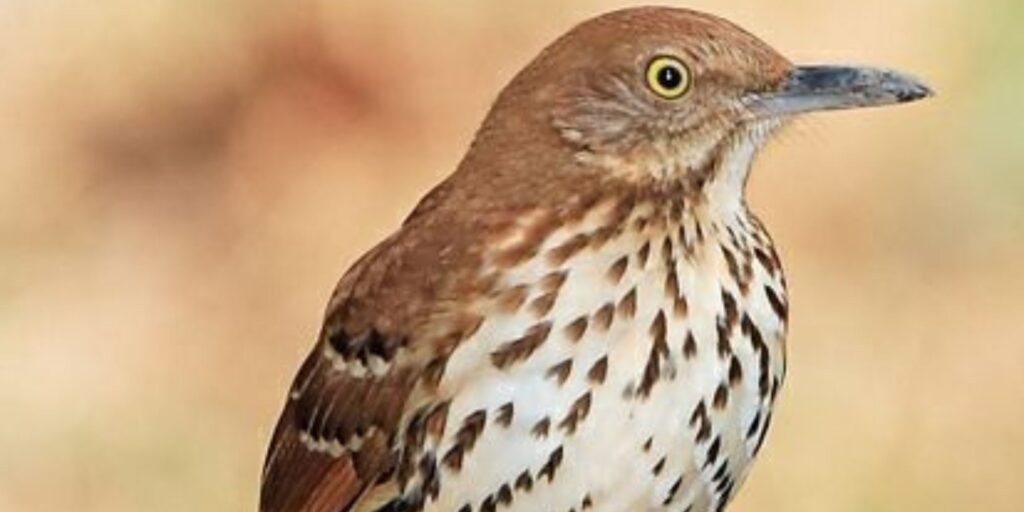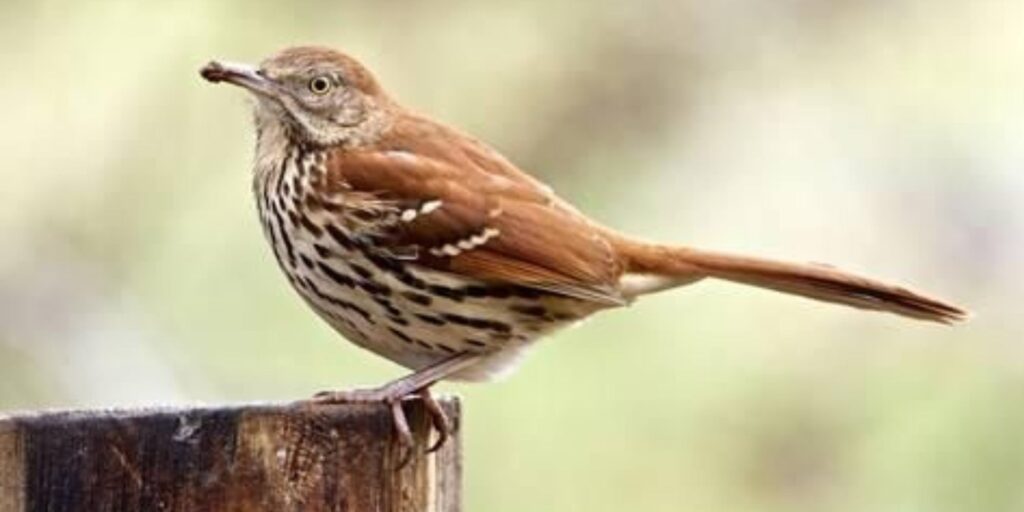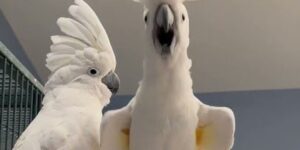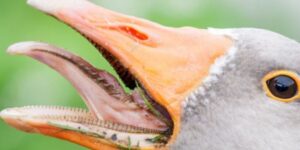Overview
The Brown Thrasher is a captivating bird known for its bold appearance and impressive vocal abilities. With its rich brown feathers, long tail, and distinct yellow eyes, it stands out in the dense thickets and woodlands where it typically lives. In addition to its striking appearance, this bird is famous for its remarkable song, often described as a series of varied and complex melodies. A skilled mimic, the Brown Thrasher imitates the calls of other birds, making its vocalizations both diverse and intriguing. Although it tends to be secretive and hides in shrubs, it often announces its presence with distinctive calls before anyone spots it. Furthermore, the Brown Thrasher searches for insects, seeds, and berries on the ground. Its energetic behavior and fascinating traits make it a popular species for birdwatchers and nature enthusiasts alike.
Exploring the Life and Habitat of the Brown Thrasher Bird

Exploring the life and habitat of the Brown Thrasher reveals a bird that thrives in dense thickets, woodlands, and shrubby areas. This medium-sized bird prefers environments where it can forage on the ground for insects, seeds, and berries. The Brown Thrasher spends much of its time hidden among the undergrowth, but its distinctive song often fills the air, showcasing its impressive vocal range and mimicry skills. With its long tail and rich brown plumage, the bird blends into its surroundings, making it difficult to spot. However, its complex, varied calls often reveal its presence before one sees it. During the breeding season, the Brown Thrasher defends its territory fiercely, using its sharp calls to ward off other birds. Its adaptability to different habitats, from forests to suburban gardens, makes it a resilient species and a fascinating subject for birdwatchers.
Brown Thrasher Bird :Basic Description
The Brown Thrasher is a medium-sized bird known for its striking appearance. With rich brown plumage, a long tail, and distinct yellow eyes, it stands out in its natural habitat. In addition to its physical features, the bird’s vocal abilities make it particularly notable. The Brown Thrasher is a skilled mimic, able to imitate the calls of other birds and even mechanical sounds. Moreover, its energetic movements and secretive nature, often hiding in dense shrubs, add to its intriguing character. Overall, the Brown Thrasher combines beauty, intelligence, and uniqueness in one remarkable bird.
Brown Thrasher Bird :Find This Bird
The Brown Thrasher bird can be found primarily in the eastern United States, extending into parts of Mexico. Their preferred habitats include shrubby areas, woodlands, and overgrown fields where they can easily forage for insects and berries.
These birds are often spotted hopping on the ground or flitting through dense vegetation. They tend to be more active during spring and summer when they are busy nesting and raising their young. Birdwatchers should keep an eye out in these environments for a chance to observe this lively species.
Other Names
The Brown Thrasher is known by several intriguing names. Some enthusiasts refer to it as the “Thrasher,” which highlights its thrashing behavior while foraging. Others might call it the “Brown Thrush,” emphasizing its melodic songs.
In various regions, it’s also nicknamed the “Rufous Thrasher.” This name showcases its striking reddish-brown plumage. These alternative names reflect not only its physical characteristics but also cultural and regional connections among bird watchers and nature lovers alike.
Backyard Tips
To attract the Brown Thrasher bird to your backyard, create a welcoming environment. Plant dense shrubs and native plants that provide cover, as they prefer areas with thick vegetation. A well-maintained brush pile can also offer shelter.
Consider adding a shallow water source for drinking and bathing. Bird feeders filled with fruits or insects will entice them further. Be patient; it may take time for these vibrant birds to visit regularly, but your efforts will be rewarded by their stunning presence and delightful songs.
Compare with Similar Species
The Brown Thrasher Bird can be easily confused with the Northern Mockingbird and the Gray Catbird. While all three share a similar size and shape, their color patterns set them apart. The thrasher boasts bold streaks on its chest, while mockingbirds have a more muted palette.
Additionally, the Brown Thrasher has longer tails compared to its counterparts. Its distinctive eye markings also make it unique among these species. Observing their behavior reveals further differences; thrashers often forage on the ground rather than in shrubs as mockingbirds do.
Species in This Family
The Brown Thrasher belongs to the Mimidae family, known for their remarkable vocal abilities. This family includes mimics like mockingbirds and catbirds, which are celebrated for their diverse song repertoire.
Mimids often showcase an impressive range of sounds, with some species able to imitate other birds and even environmental noises. The Brown Thrasher stands out due to its distinctive call patterns and beautiful plumage, making it a favorite among birdwatchers eager to appreciate this charming group of avian performers.
Looking for ID Help?
Identifying the Brown Thrasher Bird can be a delightful challenge. With its striking brown plumage and long, curved tail, this bird is hard to miss once you know what to look for. Pay attention to its distinctive yellow eyes and the unique spotted pattern on its chest.
If you’re unsure about your sighting, consider using field guides or smartphone apps designed for bird identification. These resources provide valuable information on characteristics and behaviors that will help you confirm your observations with confidence.
At a Glance
The Brown Thrasher bird, a striking member of the mimid family, boasts a robust frame and long tail. Its plumage features rich brown feathers with bold streaks on its chest, making it easily identifiable in the wild.
This species typically measures around 11 to 12 inches in length. Often found foraging on the ground, it exhibits curious behavior and an energetic personality that delights birdwatchers. The unique combination of physical traits and lively demeanor makes observing this bird a rewarding experience for nature enthusiasts.
Range & Identification
The Brown Thrasher bird is primarily found in the eastern United States, extending into parts of Canada. Its range stretches from southern New England to Florida and westward to Texas and Nebraska. You might spot this secretive species in dense thickets or shrubby areas.
Identifying a Brown Thrasher is relatively easy with its distinctive features. Look for a medium-sized bird with a long tail, bright rufous-brown plumage, and striking yellow eyes. The spotted breast adds an extra touch of charm that makes it stand out among other birds.
Behavior
The behavior of the Brown Thrasher is active and energetic. It spends most of its time on the ground, foraging for insects, seeds, and berries. The bird is highly territorial, especially during the breeding season, and it defends its space with loud, varied calls. Although it prefers to stay hidden in dense shrubs, it frequently sings, filling the air with a complex and melodic song.
Migration & Range Maps
The Brown Thrasher bird is primarily a resident species in the eastern United States but migrates to southern regions during colder months. Their migration patterns can be influenced by food availability and weather conditions, prompting some individuals to move further south.
Range maps show that this bird typically inhabits areas from southern Canada to northern Mexico. During spring, they return northward, reclaiming their territory and nesting sites. Observers can track these movements through seasonal migrations displayed on various birdwatching platforms and resources.
Songs and Calls
The Brown Thrasher is renowned for its impressive vocal repertoire. These birds have a unique ability to mimic the songs of other bird species, showcasing their musical talent and versatility. Their calls are often loud and clear, making them easy to identify in the wild.
Typically, a male will sing from an elevated perch during the breeding season, filling the air with melodious phrases that can last several minutes. Each song is distinctive, displaying both creativity and complexity in their communication.
Brown Thrasher Bird :Habitat
The Brown Thrasher bird thrives in a variety of habitats, primarily favoring dense underbrush and shrubby areas. You can often find them in fields, woodland edges, and gardens where they feel secure among the foliage.
They prefer environments with ample cover for nesting and foraging. Their adaptability allows them to inhabit suburban neighborhoods as long as there are sufficient shrubs or low trees nearby. This versatile bird makes its home wherever it can find food and shelter.
Brown Thrasher Bird :Feeding Behavior
The Brown Thrasher exhibits active feeding behavior, foraging primarily on the ground. It searches for a variety of food, including insects, seeds, and berries. Additionally, the bird uses its strong, curved bill to rummage through leaf litter and grass, uncovering hidden prey. During the breeding season, the Brown Thrasher may also feed on fruits and small animals to meet its dietary needs. Furthermore, its energetic feeding habits help it stay well-nourished, supporting its active lifestyle. As a result, the bird plays an important role in controlling insect populations while also enjoying a diverse diet.
Nesting
The Brown Thrasher builds its nest low in dense shrubs or thickets. This bird prefers a hidden spot, often lined with grasses, leaves, and twigs. The female does most of the work, crafting a sturdy structure to protect her eggs.
Typically, she lays about three to five eggs that are pale blue or greenish with speckles. Both parents share incubation duties for around 12 to 14 days until the chicks hatch. After fledging, young thrashers remain dependent on their parents for food and protection before venturing out on their own.
Brown Thrasher Bird :Conservation Status
The Brown Thrasher bird is currently classified as a species of least concern, but its population has seen fluctuations. Habitat loss and degradation remain significant threats, particularly due to urbanization and agricultural expansion.
Conservation efforts are essential for maintaining healthy populations. Protecting their natural habitats ensures the survival of this remarkable bird. Engaging local communities in conservation initiatives can foster awareness and appreciation for the Brown Thrasher’s role in our ecosystems.
Brown Thrasher Bird :Climate Threats Facing the Brown Thrasher
Climate change poses significant threats to the Brown Thrasher bird. Rising temperatures and unpredictable weather patterns can disrupt their breeding cycles and food availability.
Additionally, habitat loss due to urban development reduces safe nesting areas for these birds. As forests shrink and fragmentation increases, they may struggle to find suitable environments to thrive in. The future of the Brown Thrasher depends on addressing these pressing environmental challenges.
Brown Thrasher Bird :Human Connections

The Brown Thrasher bird has a unique relationship with humans. Many people appreciate its vibrant presence in gardens and parks. Its striking appearance and melodious songs make it a favorite among birdwatchers.
As urban areas expand, these birds adapt well to suburban life. They often forage for food scraps near homes, showcasing their remarkable ability to coexist alongside us. This connection fosters a greater appreciation for nature and encourages conservation efforts within our communities.
Ecosystem Connections
The Brown Thrasher plays a vital role in its ecosystem. By consuming insects and small fruits, it helps control pest populations while aiding in seed dispersal. This interaction promotes plant growth and diversity.
As a ground-nesting bird, the thrasher also provides a habitat for various organisms. Its nesting sites offer safety for other wildlife. The thrasher’s presence indicates a healthy environment where species coexist harmoniously, showcasing nature’s intricate web of connections.
Resources
For those eager to learn more about the Brown Thrasher bird, numerous resources are at your disposal. Field guides like “The Sibley Guide to Birds” provide detailed illustrations and descriptions. Online platforms such as the Cornell Lab of Ornithology offer comprehensive information on behavior, habitat, and conservation efforts.
Local birdwatching groups can be invaluable for firsthand experiences and community knowledge. Websites like eBird allow enthusiasts to track sightings in real time, enhancing your understanding of their range and habits.
Engage with these resources to deepen your appreciation for this fascinating species and contribute positively toward its conservation!


